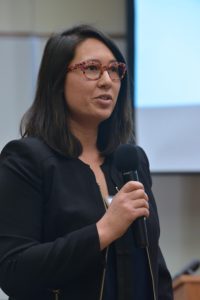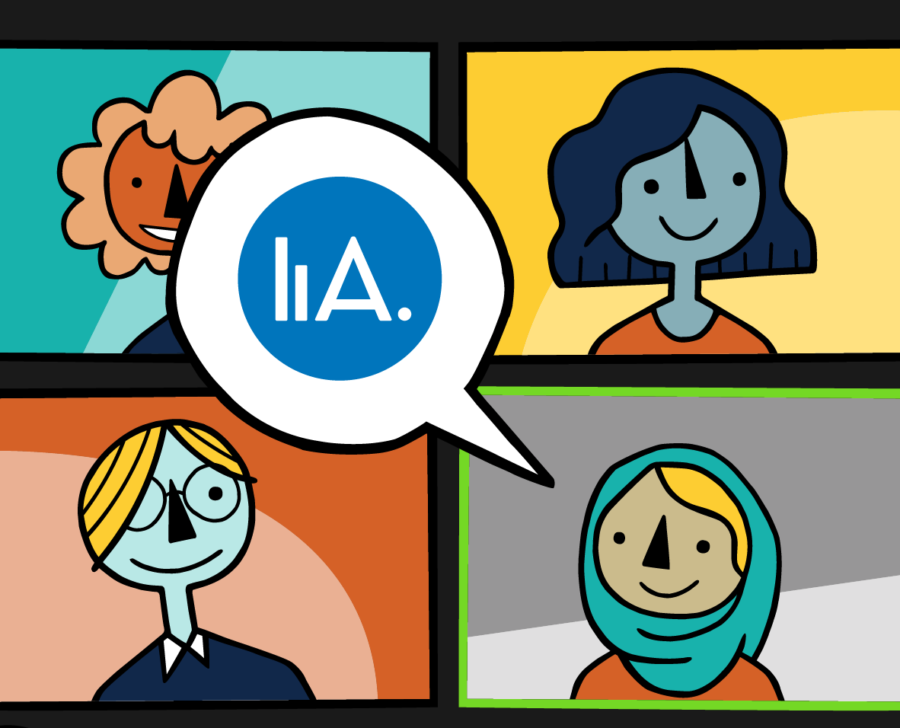Innovation in Action – Frequently Asked Questions
Innovation in Action (IiA) at the University of Michigan is a campus-wide program giving groups the opportunity, the tools, the people, and the room to take on the world’s biggest challenges.
Through the course of this experience, you and your team will do a deep dive into a problem space, develop robust insights about complex issues, and the tools to synthesize that data and turn it into a solution.
Past projects have included building entrepreneurial skills with youth in Ghana, tackling affordable senior housing, and app-building aimed at gender inequity.
General FAQs
- Do I need to have a fully-developed project or idea before applying?
Not at all. You’re welcome to bring a project from a class or student org into Innovation in Action, but it’s absolutely not required. All we ask is that you identify a challenge area you’re interested in focusing on that aligns with the UN’s Sustainable Development Goals. After that, we will walk you through the process of deeply understanding that challenge.
- How much time do you spend on IiA?
The average reported time spent on IiA, per week, is 5-10 hours.
- Are there prerequisites, or requirements?
You must apply to compete in IiA. During this phase, teams will form and will apply through the website. You should utilize the idea sharing site to create a multidisciplinary team. After you apply, we will invite you to meet with us so we can get to know your team and answer any questions about the program. Our application process is not competitive. Once your team applies you are in!
- What are the team requirements?
The team must:
- Have between 2-6 members, ideally from at least two disciplines to complement each other’s skillsets.
- Send at least two representatives to Roundtables (all are encouraged to participate!).
- Have all team members present (virtually) for the presentation at the final showcase.
- Be led by current University of Michigan students.
- What if you don’t have a team to start with?
Feel free to apply as an individual! While Innovation in Action is best experienced as a team, we know building a team this year is a difficult task. So we will help you build your team throughout our sessions in January.
- When are applications due?
Applications will open in December 2021 and are due by 11:59 PM ET on Wednesday, January 12, 2022. All applications will be reviewed for adherence to eligibility requirements.
- What have teams done in the past?
Projects in previous years have ranged from inclusive comic strips to improved water systems — for a more comprehensive collection of past projects, look here.
- What is the timetable for this year?
The calendar below is organized according to week + topic. Each week, we will cover a module topic asynchronously through the Innovation in Action Canvas site. At the end of each week, we’ll meet synchronously for a roundtable session on that particular module topic. These roundtables will be Fridays, 10:30 am – 12:00 pm EST.
Module 1: Socially Engaged Design & Team Foundations — Week of January 17
Module 2: Ecosystem Mapping: Getting the Lay of the Land — Week of January 24
Module 3: Putting People at the Center: Interviews & Information Gathering — Week of February 7
Module 4: Defining the Challenge: Synthesizing Stakeholder Insights — Week of February 14
Module 5: Ideate & Develop: Uncovering the Possibilities — Week of February 21
— University of Michigan Break —
Module 6: Storytelling: Finding your Voice — Week of March 7
Module 7: Prototyping: Drafting your Blueprint — Week of March 14
Module 8: Sustainability Planning: Putting the Puzzle Together — Week of March 21
Practice Presentations — March 14 – 31
Final Showcase — April 7 – 8, 2022

2014 IiA Finals
- What are the prizes?
Judges will award prizes in the following amounts:
- 1st Prize: $10,000
- 2nd Prize: $7,500
- 3rd Prize: $5,000
- Audience Choice Award: $1,000
- Poverty Solutions “Best Innovation in Economic Mobility” Award: $2,500
- Am I allowed to participate if I am MD, PHD, or a graduate student?
Yes! ALL U-M students are welcome to participate, regardless of degree or program. The most important thing is to have fun – to push yourself to learn something new and put the skills you gain into practice in a meaningful and exciting way.
- How can this apply to my education?
IiA is an approach to problem solving that any major, with any background, can benefit from experiencing — it is a way to approach problems holistically, and provides an interdisciplinary learning experience seldom found elsewhere on campus.
Hannah Lefton of Designing Access offers her insights
- What drew you to IiA?
I was part of a group that was working on a class project in the fall of 2020. We wanted to keep working on the project, and our professor (Katie Doyle) suggested that we join IiA as a way to expand on the project in a meaningful way. Once I saw the website, I was hooked! I knew nothing about the design process, but I could tell that IiA included valuable resources, perspectives, and activities to help us create ……
- Did you have an idea and team right out of the gate, or did you find them along the way?
We came in with the hopes of expanding on a class project, so we came in with a team and idea to begin with. That being said, our idea changed quite a bit throughout the process. Our original class project was a “DEI Checklist,” which we transformed into an online toolkit for accessible event planning.
- What was your project ultimately focused on?
We wanted to create a tool that event planners could use to make events more accessible in every way possible. We kept a specific focus on anti-racism and intersectional accessibility, and we defined accessibility broadly, including considerations to help make events inviting for disabled people, youth, people of color, caregivers, people of varying socioeconomic levels, and many other identity groups.
- What did you learn/what skills did you gain from IiA?
The design process was a totally new framework for each of us, and the process itself taught us a variety of skills. I personally took on a lot of our stakeholder interviews, which helped me build qualitative research skills, public speaking skills, and other stakeholder engagement skills. As a team, we also learned how to use MURAL, how to build and design a website, and of course lots of information about accessibility.
- How have you felt that the experience propelled your interests and career ideas?
We’re still working on our toolkit, so definitely yes! I was interested in disability justice before IiA, and I definitely plan to use the information and skills I learned in that work in the future.
- What was your biggest challenge during IiA?
Working on a challenge like “Accessibility to events and organizations for EVERYONE, especially individuals and groups who are historically/frequently excluded” is a big undertaking. While we were able to complete all the work expected of us for IiA, I definitely felt like finding time to do the work was a challenge. Even if we had been working on this challenge as our full time jobs, there would still be more work to be done.
- How can you use the IiA experience as a propeller for future interests and career development, even if you don’t win?
Design thinking is a very versatile and useful skill, especially for social workers. Since we’re interested in thinking through big challenges (like racism, ableism, and other forms of systemic oppression), we are excited to use design thinking to approach these problems in an optimistic and creative way.
- How did you apply your experiences with IiA to your education?
Most of our team members got field credit for our participation in IiA, so the experience was literally a part of our educational experience. We’ve also been able to apply the skills we gained from IiA in other classes, including a problem solving initiative about refugee systems.
How to Get Involved, More Resources
- Complete the interest form to stay up-to-date about fall recruitment events, application launch, and more
- Schedule Open Hours with Erin Moore to ask questions or chat about a potential project!



